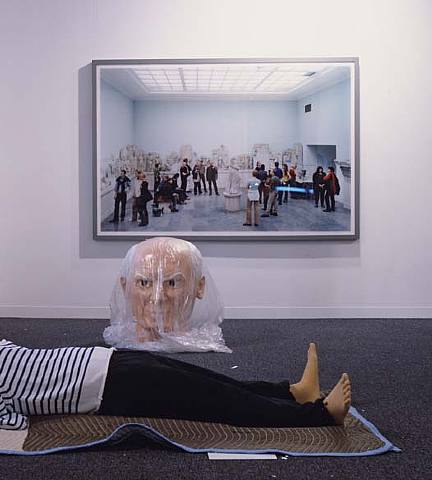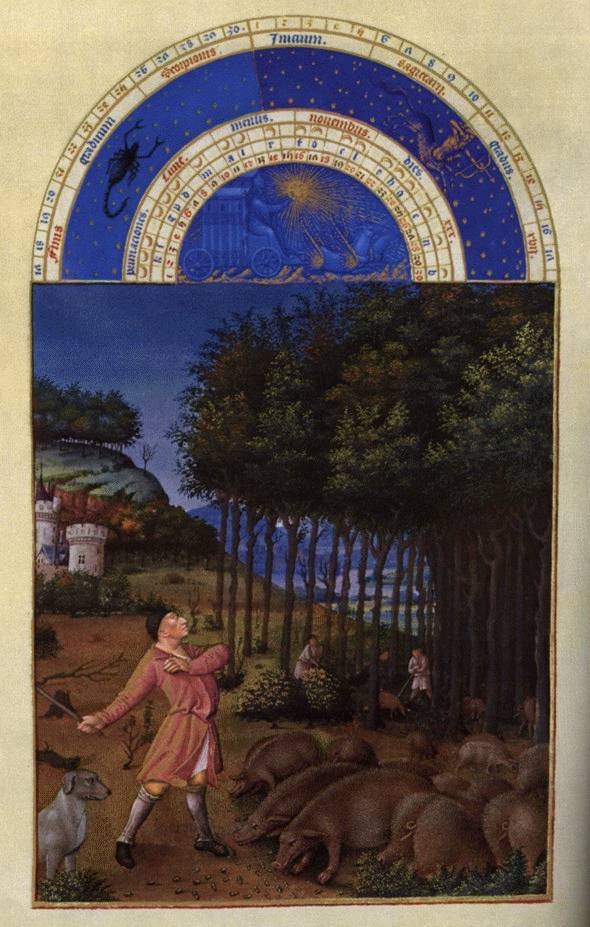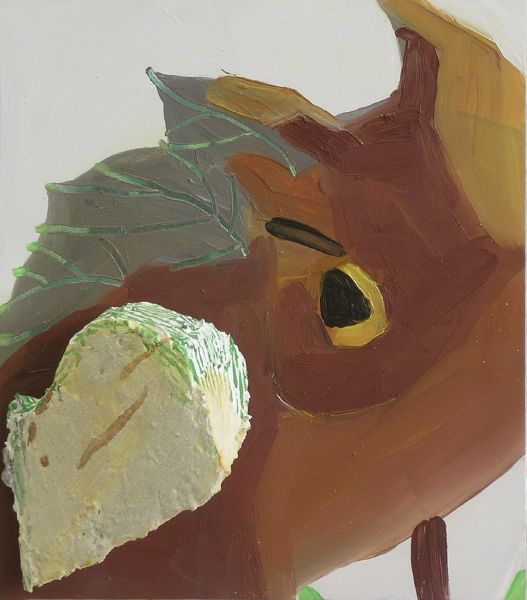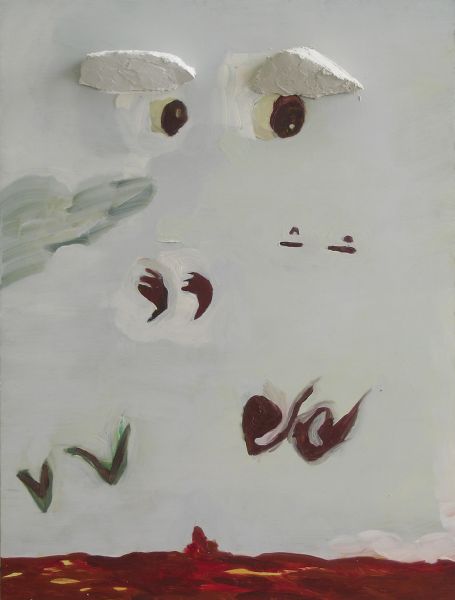[EDITING CONTINUED, WITH AN ADDENDUM, MID-DAY NOVEMBER 17]
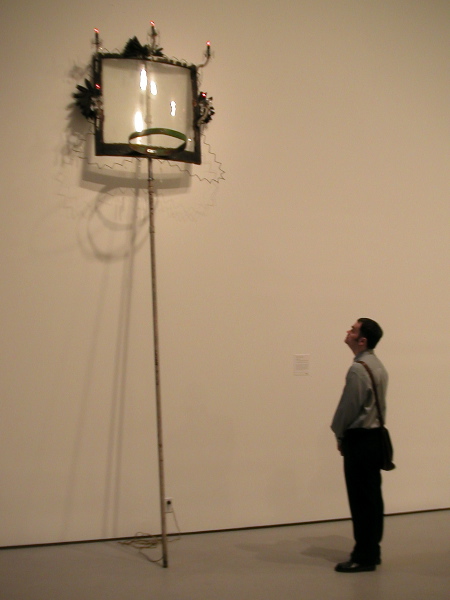
one of my favorite "discoveries" today: David Hammons's High Falutin' (1990) in the Contemporary galleries, with Barry contemplating its delights
We were there about two and a half hours, had a few croissants, a sip of coffee and a bit of mineral water (there were a number of white linen-covered catering stations, and even small tables and chairs, always within easy reach throughout the six floors of galleries) on our Members visit to the "new" Museum of Modern Art this afternoon.
I liked the easy access to refreshments and the contemplative moments which went along with enjoying them while we could hang out in the gallery spaces, but all of that will disappear after this week. What will remain are the new museum spaces and yes, a few restaurants (not yet opened) which will be assigned their own rooms.
There's more space.
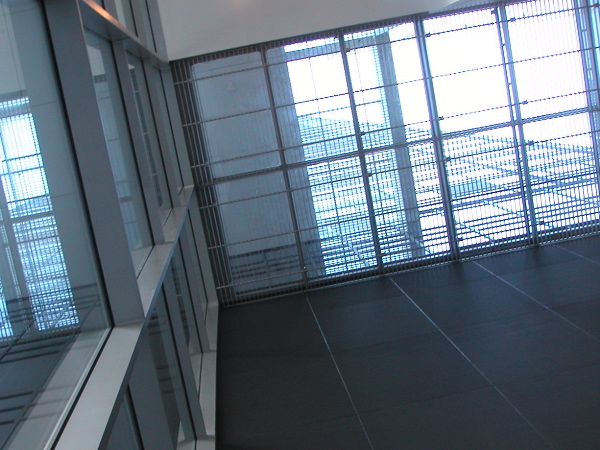
skylight, with lots of lines
There's also more natural light, more views, of the stuff both inside and outside. The building is still sandwiched between 53rd and 54th Street west of 5th Avenue, but it's now spread out on a much wider footprint. The facade of the original 1939 building has been uncovered/restored and at least one of its interior spaces is still recognizable in the S-curve of a stair landing and its black terrazzo staircase. The old main entrance however, with its curved stainless steel marquee, will now serve an elegant restaurant, "The Modern," and not happy pilgrims entering New York's oldest major shrine to modernism.
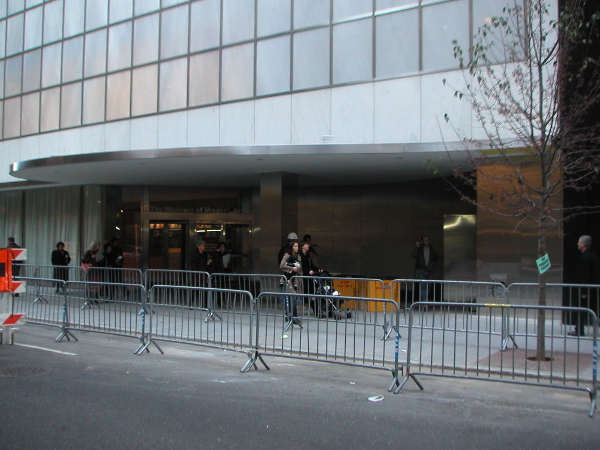
the 1939 entrance, soon to be a restaurant
There are lots of neat lines (all of them very crisp indeed) including a few very good sightlines. But no, contrary to the hype, neither the lines nor the idea of the architecture itself really disappears, even in those rooms where the art is hung comfortably cheek by jowl.
That architecture looks, well, old-fashioned. Eeegads!
Why do we have to spend half a billion dollars to construct a new building which nobody is supposed to notice? Why should it cost $425,000,000 in order to seem not of our own time, not too contemporary, just because we need more room to display more modern art, some of which as I understand it, is still supposed to be contemporary art, art of our own time? Actually, maybe the trustees wanted to build something which could be identified with the chronological mid-point of the collection as it now exists, the art and architecture of the "median era," but if that is the case, why not acquire a real mid-twentieth-century building and refit its interior to display the magnificent collection of the Modern in a context with real integrity?
This evening Barry recalled the extraordinary success of the conversions for modern museum spaces we had seen in Vienna. We have the equivalent of the Austrian Imperial stables right here; there are buildings all over New York begging to be brought back to life. I'm afraid this new architectural mediocrity, no matter how much its details are described as exquisite, will turn out to be at least a little embarassing for a city which used to know how to do these things so well.
The building we got is awfully Park Avenue - 50's and 60's Park Avenue - and so it is without the integrity which is the minimum which we should expect of a building which reflects its own time. I went to the new MoMA today after reading the previews written by those who are supposed to have the educated and aesthetic judgement which can critique as complicated a project as that just completed in Midtown. I told a number of people that I expected to be delighted, okay, at least clearly pleased, even if I did not expect to be overwhelmed.
But after experiencing the architecture first hand, doing for the Museum what it is supposed to do, I simply don't have any strong feelings at all. I'm not used to being without any aesthetic sentiments, perhaps most of all when it comes to architecture, so I'm not certain, but right now I think I'm just indifferent to this building.
I really don't know what to say. I feel post-coital without ever having enjoyed a coital.
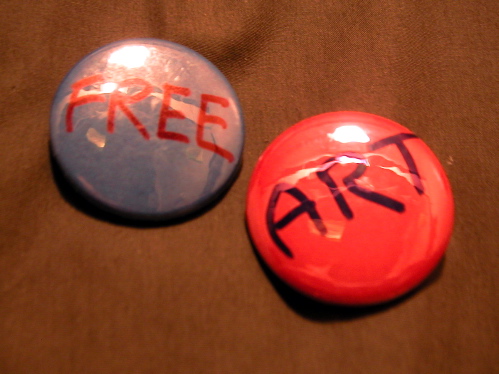
my own little protest buttons went virtually unnoticed, except by one of the caterers, who agreed with their message enthusiastically and spoke movingly of the burden the price presented for "working class" families
If I'm indifferent about the building at the moment, I'm left with one at least one strong impression, even if it's one which I brought with me when I left for the Museum today. The $20 admission fee is appalling, if not just plain immoral. All of the arguments about the price have been raised better and more dramatically elsewhere than I can here, but the fact remains that the exclusivity represented by the decision to raise the fee to a level which makes regular access to modern art almost inaccessible to just about anyone not already more or less in the club is simply unconscionable.
In the end I did leave with one negative impression I hadn't brought into the building with me, and I don't think it's a criticism which should shake the Olympians in the trustees room. In fact, accomodating it would please just about everyone: There just aren't enough benches in the middle of those huge rooms. If it's worth looking at, it's worth looking at for a while, and that sometimes means sitting with it for a bit, especially after spending that twenty dollars.
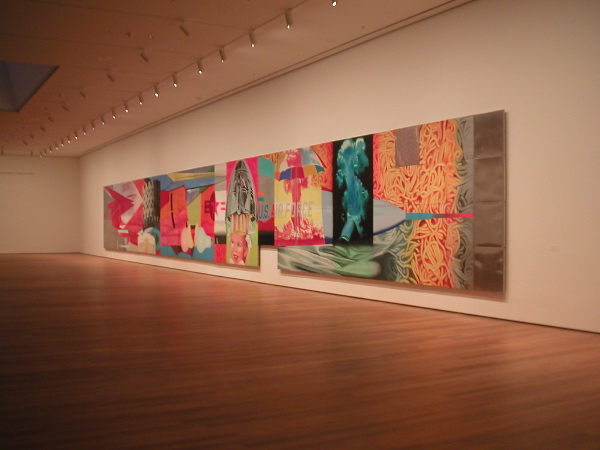
On the sixth floor only the James Rosenquist gets to rest
But go look for yourself, and when you've saved up some more money, go back again. It's a clean, well-lighted space. They haven't wrecked the art; in fact most of it looks better than ever, so some people will be happy enough. I'll be back too, especially since Members don't pay per visit, but yesterday's experience mostly makes me just want to go back to visiting the often-struggling little private and public gallery spaces I've been haunting all along. I hope to see you there too.

